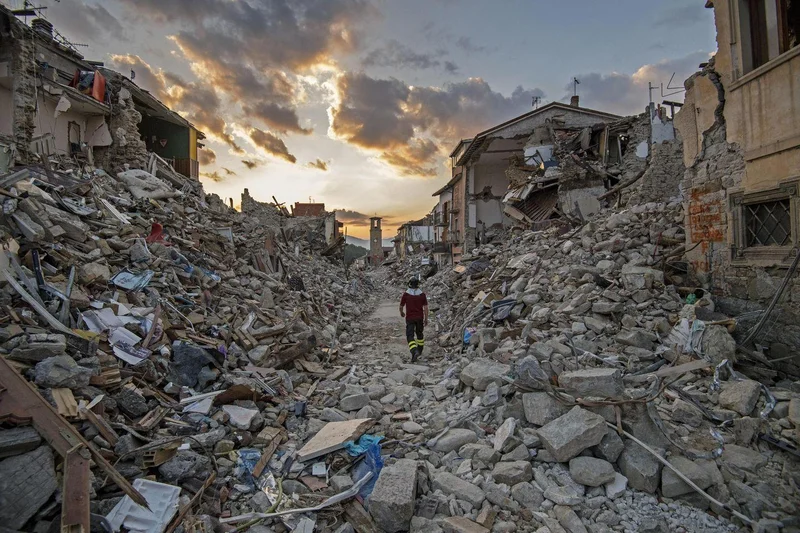Disaster: What happened?
Generated Title: Natural Disaster Response: Are We Really Getting Better At It?
Okay, let's talk disaster response. We see the headlines – floods, dam collapses, international aid. But are we actually getting better at handling these crises, or are we just getting better at documenting them? The data, as usual, is a mixed bag.
The Cost of Calamity
First, the bad news. Colorado's recent flooding, which triggered a disaster declaration request, racked up nearly $14 million in damage to public infrastructure. That's just one state, one event. And it doesn't include private property damage, lost wages, or the long-term economic impact on affected communities. What's more concerning is that officials are already talking about "long-term risks" due to rechanneled waterways. So, that 14 million is just the down payment, with the final bill still unwritten.
Then there's the Samarco dam collapse in Brazil. BHP has been found liable, and the initial lawsuit was valued at a staggering £36 billion (that's $48 billion for those of us keeping score in USD). Nineteen people died. Hundreds of homes were destroyed. The river was poisoned. But here's where it gets murky. BHP claims it's already paid out compensation to 240,000 claimants in Brazil. Okay, great. But Pogust Goodhead, the firm representing the claimants, alleges that BHP pressured people to settle for far less than their claims were worth. Are these settlements fair compensation, or are they a way to minimize long-term liability? Hard to say for sure, but the discrepancy raises serious questions.
And this is the part of the report that I find genuinely puzzling: BHP and Vale set up the Renova Foundation to handle compensation. Fine. But Pogust Goodhead alleges that a $30.3 billion compensation agreement signed with Brazil prevents claimants from discussing the deal with the firm or paying its legal fees. If that's true, it's less about "compensation" and more about control. And control is rarely about helping the victims.

Training and Teamwork
Now, for a glimmer of hope. The Washington National Guard hosted a disaster response workshop with Malaysia's SMART team. This is the first "civilian-to-civilian" engagement under the State Partnership Program (SPP) in Washington. The focus was on domestic disaster response training, including swiftwater rescue and breaching procedures. The Malaysian team is an internationally certified Heavy Urban Search and Rescue (USAR) task force, so this isn’t just some feel-good exercise.
Master Sgt. Dereck Reese with the Washington National Guard's 10th Homeland Response Force said, "The most important thing is the partnerships that we have with other countries [and] being able to work together." He's not wrong. If we ever got called to assist them—or if they ever got called to assist us—building that relationship is super important.
But let's be real. A week-long workshop, while valuable, is a drop in the bucket compared to the scale of the challenges. Does this training translate into tangible improvements on the ground? How do we measure the effectiveness of these partnerships? Are we tracking metrics like response times, lives saved, and economic recovery in the aftermath of disasters? Because without that data, all we have are nice soundbites and photo ops.
A "thought leap" here. The article mentions the Malaysian SMART team is composed of personnel from the Malaysian Armed Forces, the Royal Malaysia Police and the Fire and Rescue Department. This inter-agency cooperation is crucial. But how is it incentivized? Are these agencies sharing resources and training protocols? Is there a clear chain of command in a disaster scenario? The success of any disaster response hinges on clear communication and coordinated action.
Reality Check: Lip Service or Real Progress?
We see the press releases and the government statements. "We appreciate the great work that our DHSEM team is doing on behalf of New Mexicans in need," says Governor Michelle Lujan Grisham. But tough talk is cheap. I need to see the numbers. I need to see the data that proves we're not just spinning our wheels while the next disaster looms. Because right now, the data suggests we're spending more time reacting than preventing, and that's a losing game.
Previous Post:Satoshi Nakamoto: The Enduring Mystery
Next Post:IRS Stimulus Check: November 2025 Rumors vs. Reality
Related Articles
MP Materials Stock Analysis: The Data Behind the 'Hold' Rating
The stock chart for MP Materials (MP) over the last 90 days looks less like a valuation curve and mo...
The QQQ ETF: A Clinical Look at Its Performance and Future Outlook
Is the 'Smartest AI ETF' Just a Tech Index in Disguise? There’s a headline making the rounds that’s...
Powell's Speech: Decoding the Market Impact and Future Rate Cuts
All eyes are on Washington, D.C. tomorrow. Not on Congress, not on the White House, but on a single...
Netflix Stock Price: A Ten-for-One Split... Really?
Netflix's 10-for-1 Split: Don't Fall for the Hype Alright, so Netflix is doing a 10-for-1 stock spli...
The End of Opaque Finance: How a Single Complaint Reveals the Need for a Tech-Driven Revolution
The Analog Crime in a Digital World When I read about the recent allegations against Vincent Ferrara...
Julie Andrews: Why Her Legacy Endures Beyond Her Iconic Voice
I spend my days analyzing systems. I look at code, at networks, at AI, searching for the elegant des...





